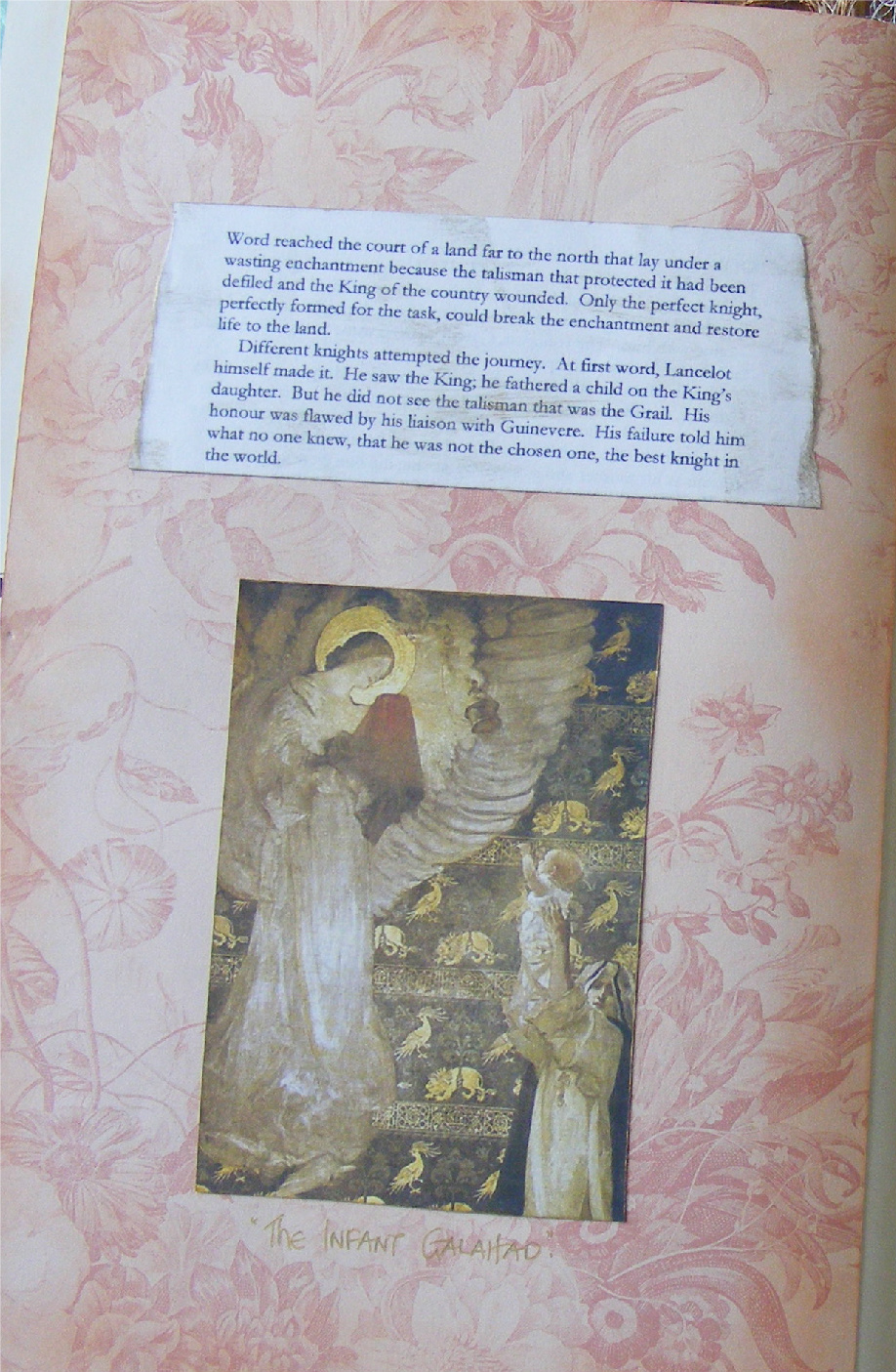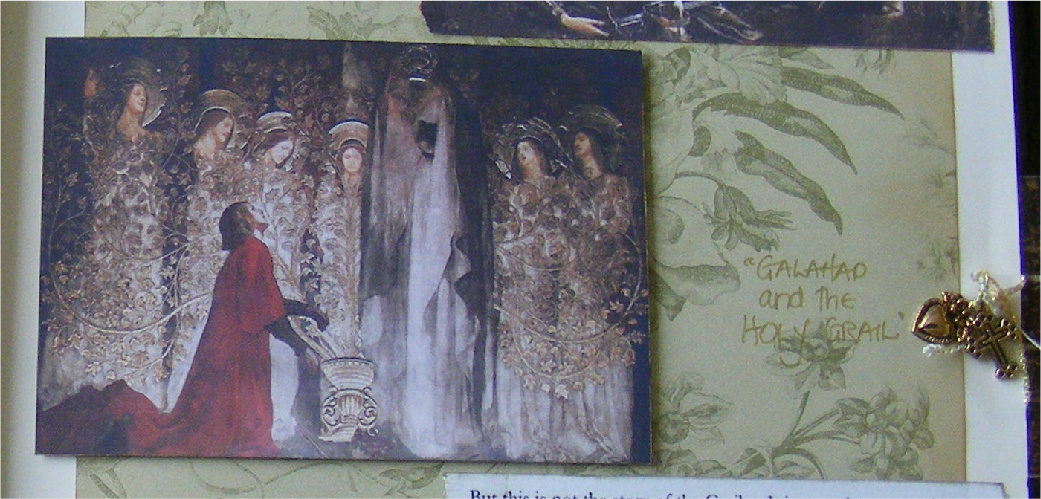The Sunday Section: Art - Edwin Austin Abbey
You surely will not be surprised to hear that I was aware of the art of Edwin Austin Abbey before I knew anything of him. I used 2 images from his famous set of murals, ‘The Quest for the Holy Grail’, in the altered book I did, entitled ‘Arthur’.
Edwin Austin Abbey was born in Philadelphia in 1852, and studied at the Pennsylvania Academy of Fine Arts. He began as an illustrator with his work appearing in Harper’s Weekly while still in his teens.
In 1871, he moved to New York. The 1875 publication of Charles Dickens’ ‘Christmas Stories’ included Abbey’s illustrations.
His employers requested he spend time in England to research the 17th century poet, Robert Herrick and so Abbey moved to England in 1878. In 1882, his illustrations graced ‘Selections from the Poetry of Robert Herrick’.
He eventually settled permanently in England in 1883, and was elected to the Royal Institute of Painters in Water Colours that same year.
In 1890, Abbey married Gertrude Mead, the daughter of a wealthy New York merchant; both were in their 40s by this time and remained childless.
Despite his moderate formal art education, he was recognised as a genius, not only by his birth country but also by London and Paris. It did not matter that he practically educated himself; he was made a full member of the Royal Academy in 1898.
'The Lute Player'
'A Pavane'
'Hamlet'
'The Queen in Hamlet'
'King Lear, Cordelia's Farewell'
'Head of Ophelia'
'Richard Duke of Gloucester and Lady Anne'
'The Penance of Eleanor, Duchess of Gloucester' (she had to walk the streets as punishment for practicing necromancy)
'The Crusaders Sighting Jerusalem'
'Who Is Sylvia? What Is She That All The Swains Commend Her?' (from Shakespeare's 'Two Gentlemen of Verona')
His famous set of murals, ‘The Quest for the Holy Grail’, which he worked on at his studio in England, took him 11 years and was finally completed in the 1890s. The set of 15 murals is at the Boston Public Library. (The full set can be viewed online at 'Digital Commonwealth'; search 'quest for holy grail')
'Galahad Receiving The Visit From An Angel'
'Sir Galahad Wedded To Blanchefleur'
'The Golden Tree, The Achievement of the Grail'
Abbey was chosen to paint the coronation of Edward VII in 1902; the official painting hangs in Buckingham Palace. The attention to detail is stunning.
Also in 1902, Abbey was elected to the National Academy of Design, and The American Academy of Arts and Letters.
His most ambitious project was started in 1908-09 with murals and artwork for the newly completed Pennsylvania State Capitol. Abbey would complete symbolic medallion murals representing Science, Art, Justice and Religion for the dome of the Rotunda; four large lunette murals beneath the dome; and other works for the House and Senate Chambers.
'The Apotheosis of Pennsylvania' (in the House Chamber)
In early 1911, while working on the ‘Reading of the Declaration of Independence’ mural, Abbey’s health started to fail; he was diagnosed with cancer.
Edwin Austin Abbey died in August 1911, aged 59. He is buried in the churchyard of Old St Andrews Church in Kingsbury, Greater London. Gertrude Abbey was instrumental in preserving her husband’s work. She wrote extensively about his art and gave her substantial collection to Yale.
Two rooms of the commission – the Senate and Supreme Court – remained unfinished at the time of his death. These were offered to Violet Oakley, the first American woman to have received a public mural commission. Having already painted 43 murals for the Governors Grand Reception Room at the State Capitol, she went on to complete Abbey’s commission using her own designs.
Violet Oakley






















